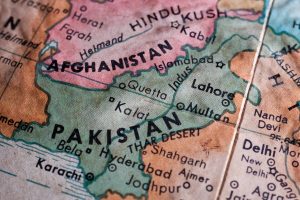On June 23, Pakistan announced a new military operation Azm-e-Istehkam, or Resolve for Stability, to reinvigorate its counterterrorism campaign amid a surge in militant violence from neighboring Afghanistan. The Shehbaz Sharif government announced that the new operation would not be a full-scale kinetic campaign displacing a large number of people like Operation Zarb-e-Azb. Rather, it will be the continuation of the ongoing intelligence-based operations, which will be expedited further under improved inter-agency coordination and cooperation.
Azm-e-Istehkam has two key components, kinetic and diplomatic. Under the kinetic component, operational efforts will aim to dismantle terrorist networks. The diplomatic component will focus on building pressure on the Taliban regime to stop harboring Tehreek-e-Taliban Pakistan (TTP) as well as evolve a regional approach.
Barring Rah-e-Rast, Rah-e-Nijat and Zarb-e-Azb operations, Pakistan has not made irreversible gains against extremist networks in its kinetic campaigns. They fell short of addressing the root causes which triggered militant violence.
Like its predecessor Radd-ul-Fasaad, Azm-e-Istehkam raises more questions than it answers. It is like old wine in a new bottle where a new nomenclature has been added to a long list of military operations that also aimed to eliminate terrorism.
Yet Azm-e-Istehkam is different from previous military operations in several respects. First, it has been announced in an environment wherein the U.S. has left Afghanistan and there is no international funding available for counterterrorism campaigns. For cash-strapped Pakistan, which is surviving on the International Monetary Fund (IMF)’s bailout packages, funding a new kinetic campaign is going to be a tall order.
Second, while in the previous operations, terrorist networks operated from within Pakistan, now they are based in Afghanistan and Iran. Hence, irrespective of the efficacy of local operations, as long as terrorist sanctuaries in Iran and Afghanistan are not eliminated, terrorism will persist in one form or the other.
Third, the operation has been announced at a time when the Pakistani polity is polarized and the state-society gap is alarmingly high. This situation will hinder the government’s effort to forge a national consensus against violent extremism. Already, Pakistan Tehreek-e-Insaaf (PTI) and Jamiat Ulema-e-Islam Fazal (JUIF), the two major political parties from Khyber Pakhtunkhwa, the province most affected by militancy, have opposed the military operation, fearing large-scale displacement. They have urged the government to focus on political rather than military solutions to end militancy in Pakistan.
Fourth, the current phase of militancy in Pakistan is markedly different from its previous iterations ideologically, operationally and strategically. The Taliban’s takeover had a rejuvenating impact on groups like TTP, which has restructured its organizational framework and tactics along the Taliban’s insurgency model. These changes have transformed the face of militancy in Pakistan which necessitates a generational approach for restoring peace and stability.
Finally, Pakistan has initiated several counterterrorism and counter-extremism initiatives in the past as well, which looked very comprehensive on paper, but their poor implementation undermined their efficacy. Currently, Pakistan is going through a turbulent political period and its economy is in the doldrums. Against this backdrop, a judicious implementation of Azm-e-Istehkam seems difficult. Pakistan lacks the political will and institutional wherewithal required to meaningfully push back against militancy.
Diplomatically, Pakistan will only get intangible support from regional countries, which look at Taliban-controlled Afghanistan as an opportunity rather than a challenge. For instance, China has fostered wide-ranging ties with the Taliban regime, and it has invested in energy and the mining sectors and is exploring more investment opportunities in Afghanistan. Similarly, Russia is contemplating removing the Taliban from its list of terrorist groups and establishing full diplomatic relations with Afghanistan. Against this backdrop, Pakistan is the only country in the region which has suffered from the Taliban’s takeover of Afghanistan. Hence, Pakistan will get sympathies and a statement of support from like-minded regional states but no material support or a joint regional counterterrorism approach is likely.
Besides, TTP is only one of the three terrorist groups undermining Pakistan’s internal peace and stability. Even if Azm-e-Istehkam manages to somehow neutralize the TTP threat, Baloch separatist groups primarily operating from Iran and the Islamic State of Khorasan (ISK) which has its network spread in Afghanistan and Central Asia will remain a potent security challenge for Pakistan.
The terrorist threat in Pakistan is diverse, multifaceted and multi-actor. Keeping this in view, rather than eliminating terrorism, Pakistan’s policy initiatives should focus on undermining the appeal of extremist ideologies to bring about a change in society. To that end, fostering a robust democratic culture, peaceful coexistence, interfaith harmony and critical thinking will be important.
Unfortunately, the fate of Azm-e-Istehkam is not going to be any different from the previous military operations. It is loud on rhetoric, low on substance and offers nothing substantive to stem the rising tide of militancy in Pakistan.

































